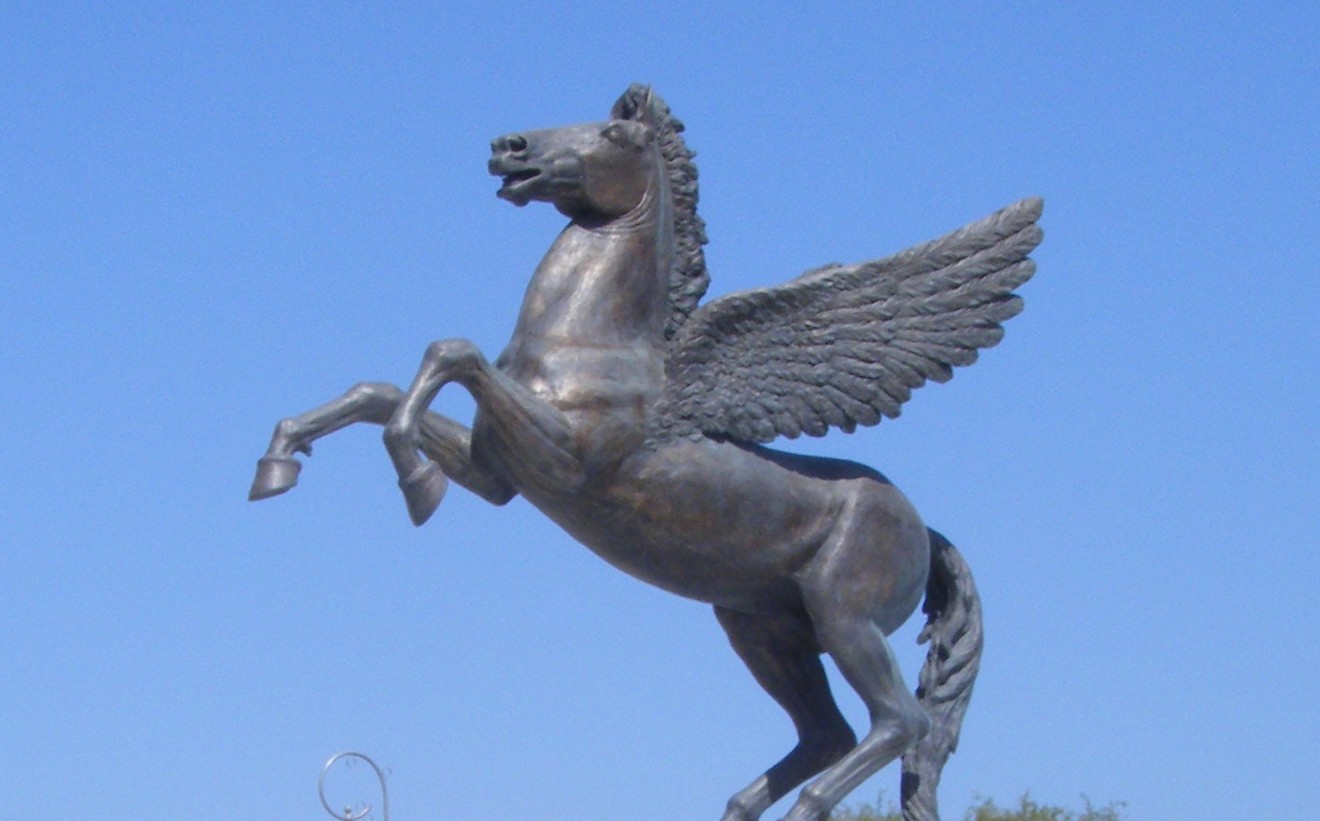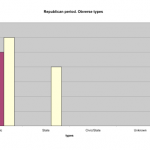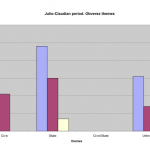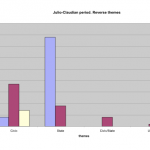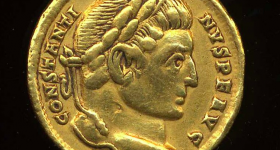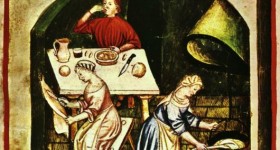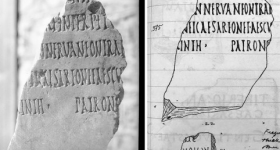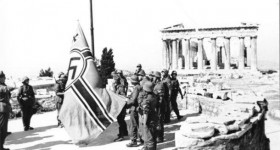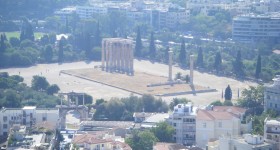The power of the Roman state in the cities of Northern Turkey. The coin evidence

Pontus and Paflagonian Coinage in the Late Republic and the Early Empire
Already before the annexation of northern Asia Minor by the Romans, the cities of Pontus (around 12 of them) produced their own bronze currencies, which circulated throughout the region. Most of the types on these coins include Mithridatic connotations based on the association of the royal line with the God Dionysus. During the period immediately before the Roman annexation (85-65 BC), we observe a profusion of 12 different types. The main mint was the city of Amisus, while smaller mints were established in the cities of Cabeira, Chabacta and Comana.
This proliferation of types and coins was significantly curtailed when the Roman presence started influencing all aspects of life in the region. The city of Amisus, which previously dominated the production of bronze coinage, now issues only very few coins; these on the obverse employ civic types (Apollo), while on the reverse we notice a combination of civic and state ideological notions (the personifications of Amisus and Roma standing side by side).
At the same time, two other cities decided to undertake the task of producing their own currencies. One of these was the city of Amastris, which produced in the past also Mithridatic coins. Amastris chose to issue bronze coins by the name of Papirius Carbo in 60 BC as well as a series of bronzes (with Tyche) during the Pompeian era (64/63 BC). These were followed by a few issues minted in the 40s, 30s and 20s, which bear the Head of Tyche on the obverse and the inscription AMASTREWS and crossed torches within wreath on the reverse.
The second city that ventured into the minting of coinage under the Romans was the colony of Sinope. During the Roman Republic this city seems to have been the most important mint in the Pontic region. It was founded as a colony by Caesar in 45 BC, which is also the most likely date of its first Roman coins. The civic authorities chose a combination of civic and state types to be employed on the obverse and the reverse of the coins. Specifically, on the obverse we encounter the heads of Tyche (civic) or Ceres (civic) or the laureate head of Caesar (state). On the reverse, we notice the presence of sacrificial implements (civic/ state), crescent above plough (state), clasped hands holding cornucopia (civic) or a bare head (unknown).
On the whole, the following charts demonstrate the predominace of civic types in the case of the obverse types of all cities and the reverse types of Amastris. On the other hand, we observe the predominance of a combination of state with civic themes especially in the cases of the reverse types of Amisus and Sinope.
With regard to the Julio Claudian period, the cities that continue the production of local coinages are Sinope, which remains that stronger mint, and Amisus, while Comana resumes production during the reign of Caligula. Sinope introduces issues that on the obverse bear heads of females and males (civic), heads belonging to members of the imperial family (state) and the God Sol (civic). On the obverses, we find the recurring type of a plough or ploughing (state), cornucopia and globe (state), depictions of members of the imperial family (state), a vase (civic), Tyche (civic), inscriptions in wreath (state), Capricorn and globe (state) and the Dioscuri (civic).
On the obverse of the coins of Amisus we notice a combination of state and civic types (although some of them cannot be clearly defined). Specifically, there are the heads of members of the imperial family (state), Athena (civic), Hermes (civic). Also on the reverse, we find the common theme of Amisus and Roma (civic/ state), Nike (state), Athena (civic), members of the imperial family (state), Dikaiosyne (civic), owl (civic), star (civic) and AMISOS in wreath (civic).
In Comana, the obverses include the heads of unknown people, while on the reverse we find club in wreath or bust with club (civic), a theme with obvious allusions to the worship of Hercules.
On the whole, we may conclude that the proliferation of civic themes that we observed on the obverse of Republican coins is gradually coming to an end. On the other hand, the state themes dominate the issues of the colony of Sinope, while civic themes are more popular in Comana and Amisus.
The most surprising results are the patterns emerging from the analysis of the obverse types, which were usually chosen to advertise the political authority that guaranteed the value of the coins. In the Pontic cities the obverses of issues carried local civic as well as Roman state types. The most likely explanation for this was that the colonial authorities immediately acknowledged the religious authority of the local city gods, and in this respect grafted the new political institutions of the colony onto the Hellenistic religious infrastructure. This limited the potential clash between the newcomers and the indigenous populations to the secular field, while at the same time opening up an area in which common religious beliefs could develop in the future.
This mixed pattern seems typical of the late republican period before the clear-cut imperial ideology of the Augustan age became more popular in the provinces. The obverse types used to bear mainly portraits of the emperor or of other members of the imperial family, exemplifying the authority that eventually legitimized provincial currencies. State themes are also heavily dominant in the reverse types. It is apparent that the choice of types and legends used by most of the colonies during the Julio-Claudian period suggests that their citizens identified themselves strongly with the collective Roman State. They emphasized their attachment to the imperial household and to the newly forged ideology of Augustan victory, peace and prosperity.
In some cases, local civic types are commonly used. The cities proclaimed the extent to which they had become assimilated into the fabric of ‘Greek’ civic culture. Each city thus established its own individual character within the spectrum of different civic constitutions. The representation of state themes would distinguish the urban centers from the rest of the cities, while the representation of local themes would distinguish them from each other. The establishment of differences rather than similarities helped to create particular combinations of state and civic identity in the individual cities.
